FINDING THE UNKNOWN III
Subduction, supernovae, and star stuff. Finding spirituality in understanding our place among the stars. June 20, 2018.

BEEP. BEEP. BEEP. Eyes closed, I swat at my phone to extinguish the sound of my morning alarm. No matter how far off the grid I go, or how strongly I commit to taking a break from technology, I am never able to escape my cell phone alarm. The commodification of time is the prison of the modern human. The screen reads 3:43 AM when I open my eyes and push the snooze button. I always set my alarms to end in anything other than an even 5 or 10 — a futile-yet-feel-good middle finger in the direction of time’s control over my life.
Scanning the cramped, temporarily arranged-for-sleeping interior of my Subaru Outback, I feel surprisingly alert. Climbers have a term for getting up at this hour, while snow remains frozen and crowds sleep: the alpine start. I love alpine starts. They just usually don’t begin well for me: pre-departure, I’m grumpy and lethargic. Today is different. Clarity and calm fill my mind despite a night of restlessness and the periodic waking that accompanies sleep in a strange place. I layer up and step outside of the car.
At this hour, darkness fills the parking lot of the Kohm-yah-mah-nee Visitor Center, shadowy outlines of silent vehicles rising like waves from the jet black sea of pavement. The sky is alight with stars. Silhouettes of evergreen trees and craggy peaks interrupt its glow, looming up and out of the clear-cut darkness — visual whispers of we were here first. Alpine starts are all about business: collect your climbing shit, eat breakfast, slam some instant coffee, and set off. But being up early on a clear night in the mountains draws me to my camera, away from the business. With a glance upward, the questions begin burning in my head:
How often do we stand beneath a truly dark sky?
How often does the galactic core paint the night above a milky white?
How often are we reminded of our place among the stars?
I take some long-exposure shots before grabbing my snowshoes and loaded backpack, then head off down the road, the stars lighting the way forward.
My objective is the Neutrino Couloir, a narrow gulley on the north face of Brokeoff Mountain. During the day, Brokeoff is visible from where I parked my car at the visitor’s center of Lassen Volcanic National Park. At 4:00 in the morning, with the moon fully set, it is invisible. I’ve studied the route, read the trip reports, and watched videos of the climb. I’ve even camped on the top of Brokeoff. Still, the journey ahead feels thickly shrouded in the Unknown, unreal and unfathomable. I’ll be at the base of the Neutrino Couloir in just a few hours, but I might as well be trekking up to the stars.
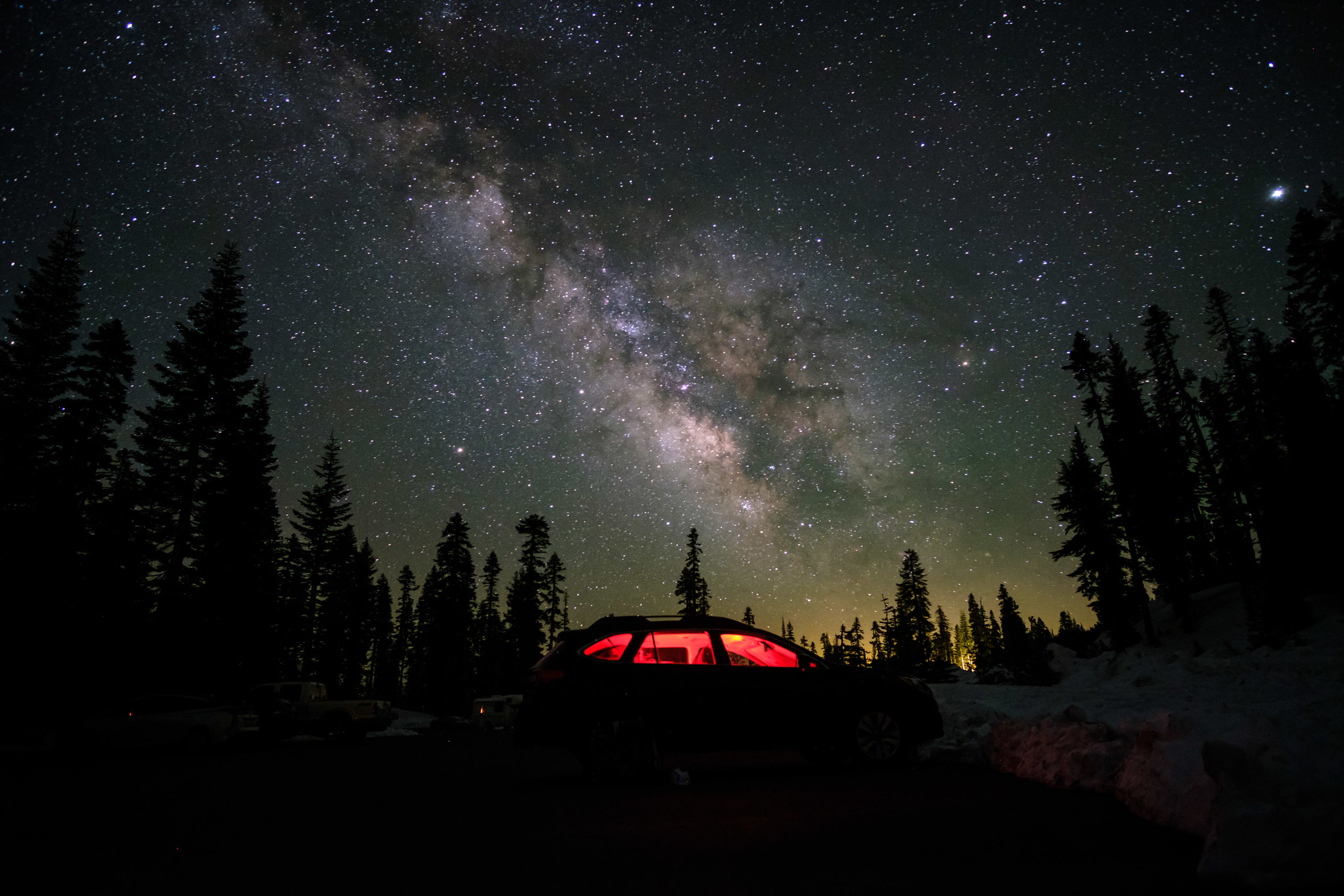
4.5 billion years ago, a bunch of dust and gas floating around in our galaxy began to converge. Add gravity, a bit of time, a dash of angular momentum, and nuclear fusion, and our solar system slowly took shape. The Earth formed from a protoplanetary disc, third planet from the sun. In its first two eons, despite the active formation of the planet’s crust, intense volcanic activity, and massive bombardment by meteorites, life was already possible. Evidence indicates liquid water existed as far back as 4.4 billion years ago; primordial life, 3.7 billion years ago.
The dust and gas populating the early solar system comprised of the elements critical to the formation of the Earth’s rocky surface, bodies of water, and organic compounds. In 1948, scientists Ralph Alpher, Hans Bethe, and George Gamow outlined the first theory of Big Bang nucleosynthesis, the mechanism by which elements were formed following the Big Bang over 14 billion years ago, in the paper “The Origin of Chemical Elements” (Physical Review, April 1948). Their theory explained the formation of light elements — hydrogen and helium — but could not account for further neutron capture and accrual of mass units: the ‘weight gain’ that happens as we move up the periodic table. And so, we were left to wonder: how did heavier elements — those required for life, such as carbon and oxygen — come to be? It begged further study and speculation.
Stars, as it turned out, held the key to bridging the mass gap. Some 300-500 million years after the Big Bang occurred, enough cosmic gas coalesced that it eventually collapsed under its own gravity, sparking a nuclear fusion reaction: stars were born. The resultant within-star temperature and density extremes fused three helium-4 nuclei into carbon. In what we now call the triple-alpha process, first two helium-4 fused into beryllium-8, then helium-4 fused with beryllium-8 into carbon-12. Before being documented in a lab, Fred Hoyle famously asserted that the conditions for the creation of carbon-12 must have existed because we — carbon-based life forms — exist. Physicists working backward from this assertion affirmed it in 1957.
“The Synthesis of Elements in Stars” (Reviews of Modern Physics, 1957), provides a total picture of how stars are the cornerstone of the element-diverse universe. Authors E. Margaret Burbidge, Geoffrey R. Burbidge, William Fowler, and Fred Hoyle describe a number of mechanisms by which heavier elements are formed within stars, then ejected into interstellar space during supernovae explosions. If not for the explosions, those heavy elements formed through stellar nucleosynthesis would stay trapped within the star. It is therefore the mushrooming energy of detonating stars that projects and distributes the rich blend of elements composing the Milky Way galaxy and beyond.
Thus, from dying stars came humankind; or, as Neil deGrasse Tyson would say: “We are star stuff.”
We are star stuff.
We are star stuff.
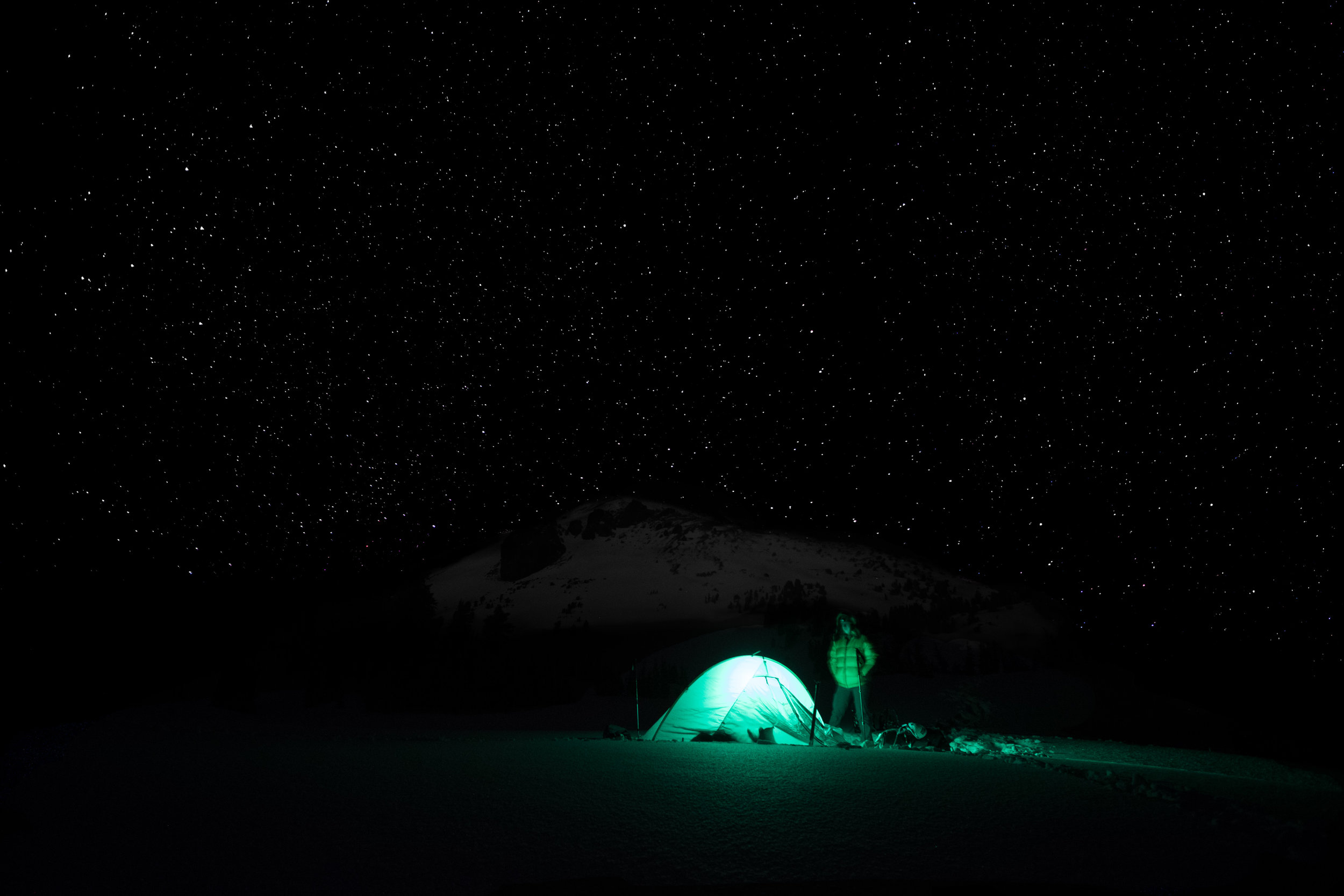
I walk, snowshoes compressing frozen hydrogen dioxide molecules underfoot. The canopy of distant stars fades. Our local star rises and pushes them away. I am standing at a high point along the ridgeline connecting Mount Diller to the sheer north face of Brokeoff. For the first time, I have a clear view of Neutrino Couloir. It is said to have gotten its name because those who climb the couloir are usually “just passing through:” a clever nod to both physics (a large number of neutrinos pass through us every second) and climbing (most climbers ascend the couloir on their way to another climbing objective). Swapping snowshoes for crampons, I descend from the ridge into a small bowl at the bottom of the couloir.
From the base of the route, I mentally divide the climb into three sections: the part where the snow is already exposed to the sun, the part where the snow is in the shade, and the part I can’t see near the top, where the couloir turns left and out of sight. I’ve got some ideas about what the climbing will be like in the first two sections, having read several climbers’ trip reports. The last section is a mystery. From the description of the route it’s supposed to be the steepest part. I just can’t see it yet.
So I begin, navigating with careful tread the foreign quality of this snow, which varies with the changing gradient. At first, my boots plunge 12 inches deep with every step. Climbing in loose snow expends significant energy and brings progress to a halt. Soon, I find a long, narrow runway of firm snow. It’s not exactly a reassuring development. The normally loose snow here gets compressed when something large and heavy falls into the couloir and slides the several hundred feet of its length. Scanning the length of the runway yields no obvious culprit; it must have been icefall, long melted away. Between visible puffs of exertion, I count my blessings, hope whatever created my climbing surface doesn’t happen while I’m in the couloir, and continue onward, pace quickened by the newfound stable climbing platform.
The snow in the shaded section defies my expectations. The top layer is frozen and firm, but wielded before me, my ice axe and ice tool punch right through it to a lighter layer underneath. Not good. When my cramponed boot kicks through the crust, powder shoots out the hole, sprinkling outward in a winglike pattern. I observe in wonder; it’s quite beautiful. My brain cycles through the reasons snow might layer in this way, and I figure it out: these are textbook avalanche conditions. Wonder turns to fear.
I think back to the avalanche class that I took with Alpine Skills International in 2017. One of our instructors, Zeb, described this exact snow layering condition as an Oreo cookie: a firm layer on top, supported by an unconsolidated layer, which sits on yet another firm layer. The firm layer is bonded to itself (the chocolate cookie in this analogy) but not bonded well to the snow it is sitting on (the cream). Under the right conditions, with the right stimulus (e.g., a human climbing on it), the cookie can separate from the cream and slide off down the mountain. An avalanche.
Punching ice tools and boots through the firm layer, I watch for shooting cracks — a sure sign of danger and instability. Luckily I don’t see any, but still I am wary. I glance ahead to estimate how far these conditions might continue and notice a steeper section with some differently textured snow a couple dozen feet up, around where rock meets snow. I promise myself that I will turn around if the layered snow persists past that point.
With as much precision as I can muster, I push through the Oreo cookie, launching many mini-avalanches in my wake. I do this with intention. Creating controlled destruction with my feet is safer than balancing delicately on unpredictable dinner plates of frozen water. Worst-case scenario, the entire cookie section slides out from under me. Four inches of snow won’t bury me, but it will certainly send me tumbling back down the couloir. (Getting pushed into dangerous terrain by shallow avalanches is a lesser-known danger of snow. Because it doesn’t have a lot of sex appeal, it isn’t talked about much.) As I approach the rock, the snow changes again; this time into a tame, desirable six inches of semi-consolidated, welcoming, climbable, huggable snow. I traverse over to the center of the couloir, taking a moment to breathe and scan my surroundings. 2 hours in, I can finally see the rest of the route. The couloir narrows and the route turns east before concluding at the underside of a set of ridgetop cornices.
Looking around, I study the geology of the couloir. Its beauty frightens. I’m alone at the center of an upward sloping mini-canyon carved out by snow, with cliffs of unstable rock flanking each side. Rock and ice fall are still possible, likely even. The sizeable cornices lining the top of this ancient, crumbling volcano seem like perching dragons, hungry and threatening my existence.
Now I can see: these dragons were most certainly the source of the debris runout I encountered a few hundred feet below. Episodically, a chunk of snow and ice breaks off a cornice and falls hundreds of feet to the couloir, crushing snow and anything else in its way.
My reverie is broken by the loud sound of rock-on-rock echoing high off the western flank. As I watch, a fist-sized rock clamors toward the snow, energy supplied by gravity, building up speed as it goes. It enters the couloir 75 feet above me. Bouncing once on the snow, it ricochets in another direction, now heading straight toward me. I watch and wait, watch and wait, then lean slightly to the right as the rock whizzes by my helmeted head. I turn to watch the rock pick up speed as it continues for hundreds of feet... “just passing through” the Neutrino Couloir.
I’m in a dangerous place; it’s time for me to move. Unracking the ice tool from my climbing harness, I start up the last leg of the route.
55 million years ago, a single tectonic plate ran from what we today call Alaska 6,200 miles south to Mexico. Known as the Farallon Plate, it sat calmly between the Pacific and North American plates, causing nobody any problems until Pangaea began to break apart. Then it collided with and began subducting beneath the North American plate. Eventually, the center of the plate was entirely consumed, leaving behind multiple smaller plates: the Juan de Fuca, Explorer, Gorda, Cocos, and Nazca plates. To this day, the Northern Trio, comprised of the Juan de Fuca, Explorer, and Gorda plates, continues to subduct, causing much of the volcanism in the Cascade mountain range. The Cascade volcanoes of Lassen Volcanic National Park in Northern California, for example, were spawned when magma from the Gorda plate diving beneath the North American plate made its way from the mantle to the surface.
The largest volcano to have existed in the boundaries of Lassen was named Mount Tehama. According to Phillip Kane, author of Through Vulcan’s Eye: The Geology and Geomorphology of Lassen National Park, the composite volcano “was between 12-15 mi in diameter (19-24 km) and rose about 6000 ft (1800m) above the landscape to an elevation of 11,000 ft (3300m).” Had park boundaries existed during Tehama’s peak size, it would have occupied almost the entirety of the southwest corner of the park, centered somewhere around the present-day Sulphur Works attraction, a collection of fumaroles just a short walk from the Kohm-yah-mah-nee Visitor Center. It would even have dwarfed Lassen Mountain, the southernmost active Cascade volcano and contemporary star of the park. At a height of 10,457’ and a volume of 0.6 cubic miles, Lassen is currently the largest lava dome volcano on Earth.
Like many such giants lost to time, Tehama fell victim to erosion, hydrothermal activity, and (ironically) the same kind of tectonic collapse that had initially given rise to it. It wore down to the remnants we recognize today — Mount Diller, Mount Conard, and Brokeoff Mountain — sometime during the Pleistocene Epoch between 2.6 million and 11,000 years ago. The Pleistocene is also known as the Ice Age, since during this period over 30% of the planet was covered with ice. Massive glaciers ebbed and flowed in cycles. Global sea levels lowered hundreds of feet as glaciers advanced, then rose again upon glacial retreat. Glaciers on Mount Tehama flowed downward and outward, scraping hundreds of feet of rock off the volcano and digging deep valleys in the surrounding landscape. If you look at a modern topographic map of the park, you can almost trace a curve connecting the ridgelines of the remaining peaks, and thereby resurrect the volcano back into record.
Geologic forces continue to pull what’s left of Tehama to the ground. Water seeps into cracks in rock during the warm daytime hours, then freezes and expands at night, exerting tremendous pressure on the rock, splitting it into pieces. Its bonds broken, the rock succumbs to the force of gravity and turns into rockfall, bouncing down the mountainside, falling into gullies or couloirs and piling up as scree. Masswasting, the movement of material downward by gravity, can be slow or spectacular. Slow: a single stone bouncing down a hill; a bit of dirt carried by a creek. Spectacular: landslides, avalanches, mudslides.
After thousands or millions of years, these natural weathering and masswasting processes carve slots like the Neutrino Couloir out of the sides of mountains. Then, one day, a climber walks by, looks up, and thinks, That looks climbable; and a route up the mountain is born. People flock to the route, drawn to the physical challenge, or the view from the top, or to finding their place in the universe. As they ascend, rocks clatter past helmeted heads and snow slides down the mountain. These are simultaneously principal threats to a climber’s life and the very forces that deconstruct the mountain, making climbing possible.
Every rock, every grain of dust pulled off the mountainside, represents a pivotal moment in the shaping of the peaks that line our habitat and inspire our imaginations. They are immutable to us, but vulnerable to the force that birthed our solar system. When we look up at their summits, it is a wonderful coincidence that our eyes also point toward the stars.
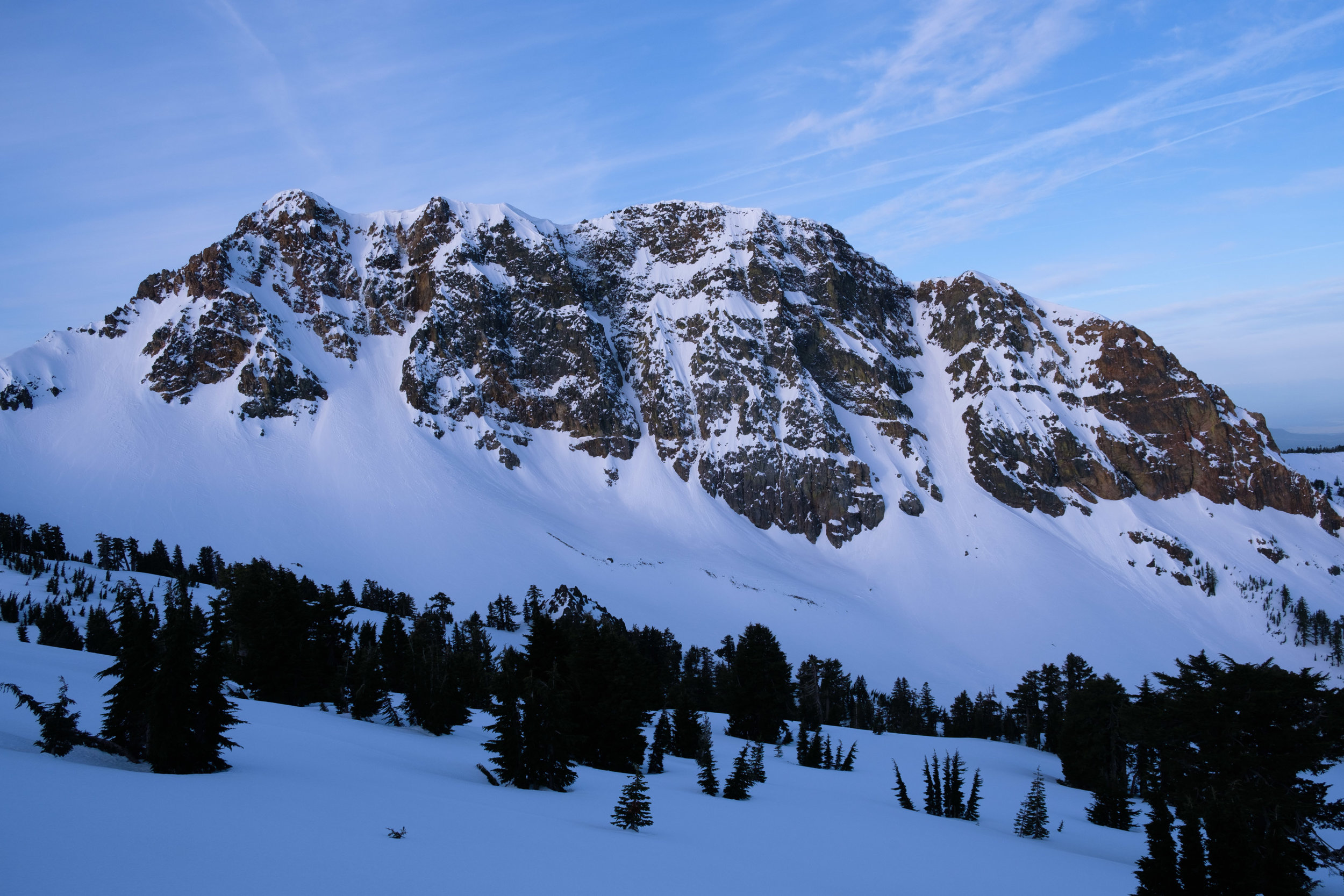
Oh, fuck. Here we go.
I am not sure if I say it out loud. I am sure that I think it.
No matter how much you prepare and anticipate, the real thing can still come as a surprise — especially the first time.
Ice axe in piolet appui position, I lean forward, pressing the pick to the snow with the weight of my body. The pick goes nowhere, scraping against the snow’s surface. I press again. Nothing. Looking up, I notice a sheen to the snow, a reflectivity I haven’t yet seen today. I’m in a narrow section of the couloir, perhaps 15 feet across, and it is steep. 60 degrees or more. The top of the route beckons from 60 feet above. Those 60 feet feel miniscule after almost 800, but I know they will be the most physically and technically challenging, perhaps of my life, when my pick does not penetrate the snow. I’ve reached a section of solid ice.
I shift my grip down the handle of the ice axe, lift it up, and swing. Imagine a carpenter swinging a hammer or a woodsman swinging a hatchet, then forget it, because it’s not like that. It’s more like “throwing darts,” in the words of Takeshi, my guide and ice climbing instructor on a trip to Banff last year. The pick buries an inch or two into the ice. I make the same motion with the ice tool in my right hand. It’s similar to an ice axe, but heavier and with a more aggressive curve for this very task. In two swings, I’ve embedded both climbing implements in the ice above my head, offset vertically to prevent cracks from joining together and breaking the ice. I straighten my arms and transfer my bodyweight onto the tools, moving my feet up one after another, kicking forward to get my crampons’ front points into the ice. Four points of contact. My life hangs from a few inches of steel and my body knows it, my rapid heartbeat resounding in my head. Reminding me that I am alive.
Just like that, the Unknown becomes real. I am here, right now, without exception, without excuse. There’s no direction to go but up. No one to guide me but myself.
I climb as though in a tunnel, focused solely on my body, the ice, my tools. The only sounds I hear are my heartbeat, my breathing. I feel my body in pain; adrenaline dulls it. I keep pushing, determined to reach the end of the ice. Twenty feet from the top, I stop to rest. Take a breath. Begin again. Carefully, slowly, I negotiate the top-off, climb up ice tools buried in the strange, flat top of Brokeoff’s summit plateau.
I’ve just finished passing through.
At the top of the exit, I look down and scream, unsure what I am screaming about. Until you’ve done it, you think you will arrive at the top of a mountain and feel joy at your accomplishment, but it’s more complex than that. I scream in fear, wonder, pain, surprise. I scream because I am human. Because I am alive. Because I can. It means everything and it means nothing; for a moment, it is my universe.
I sit, contemplating the crazy fucking thing I’ve just done while I tend to my hunger, dehydration, and sore feet. When I feel ready, I take a picture to remember the exit by, then hobble the last half-mile to the mountain’s true summit. There I sit again, watching the sky and feeling the sun and basking in the energy of the high alpine.
Above, even higher than me, but lower than the stars, a narrow, wavelike cloud stretches from horizon to horizon. The cloud travels west to east like it’s on a mission, its imminent arrival and impending departure announced by a strong wind. As it passes over Lassen Peak, the wind calms for a second — and then the cloud is gone, continuing, as I must, on its journey eastward.
This life and this world are beautiful beyond description.
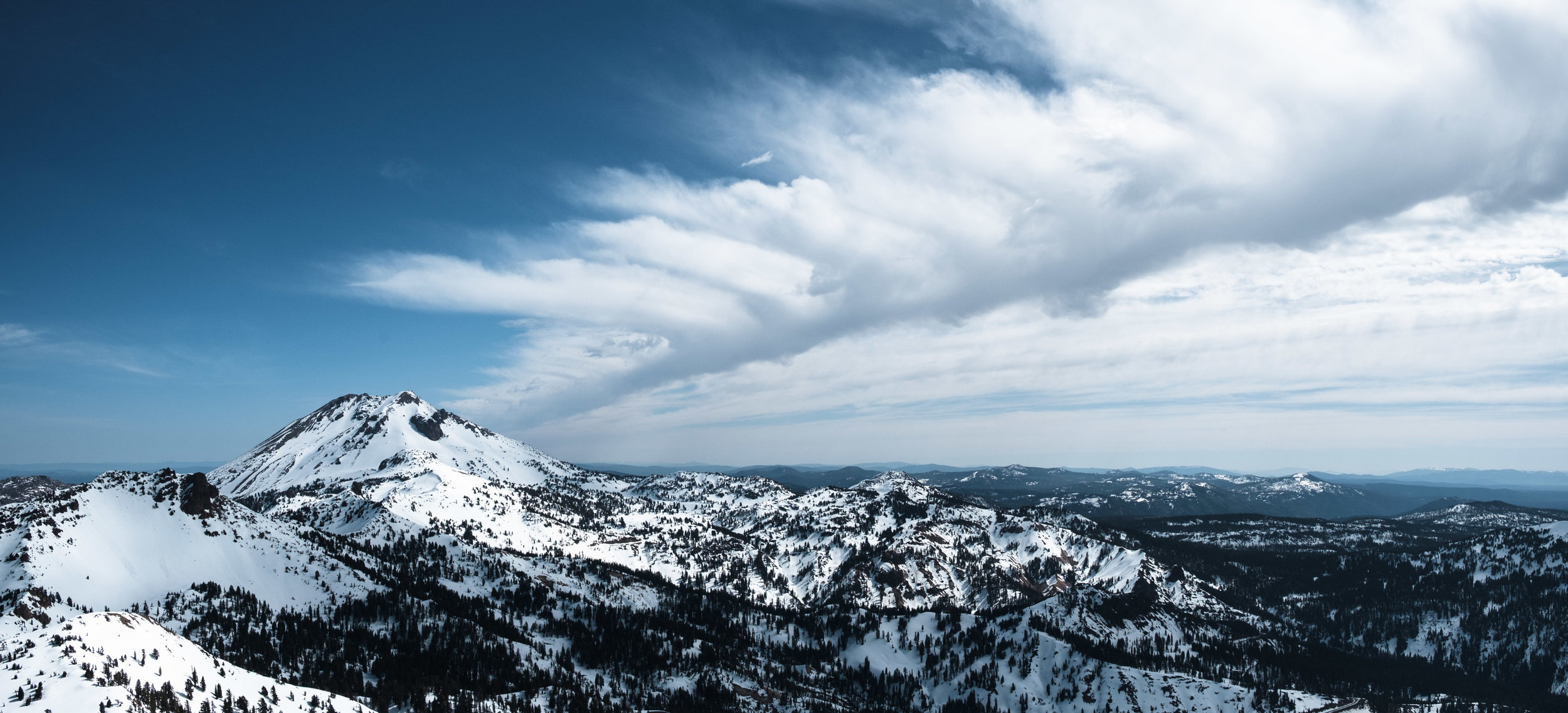
The descent from the summit to the parking lot is fast and familiar. Almost a year after my last camping trip to Brokeoff, the way back remains crystal clear. The grandeur of the mountains is paralleled only by the beauty of the parking lot after a long, strenuous climb: car to car, I’ve been solo in the mountains for 10 hours. I crack open the rear hatch of my Subaru, shed multiple layers of wet gear, and lay them all out to dry in the sun. Down here, it’s a blue-sky, 65-degree day. The camp chair comes out next, along with my stove and a packet of ramen. Water soon boiling, I soak up the sun like a house cat in afternoon light.
Later, a man in his 60s, struggling grandson in tow, returns to the van in the adjacent parking spot. Opening up the back of the van to look for food, he catches me vegetating.
“Where’d you come from?” he asks. Eyeing my gear: “Did you climb something?”
Following a half-day of complete solitude, I welcome the interaction. He will be the first of many to stop and chat, all of them lured by the sight of my gear. I will meet a couple from Michigan here to visit California’s numerous (and unparalleled) national parks. Two climbers gearing up to do an overnight mountaineering trip to Lassen Peak. A skier from the night before, who will greet me with a smile and relief in her voice: the lone climber has made it back.
Turning in my chair, I gesture lazily in the direction of Brokeoff Mountain. “I went up the north face of that one, Brokeoff. You can see it from here.”
“Ah,” the man in the van says admiringly. “It’s great that you young kids get out there. I’ve got bad knees. I can’t go far these days — we just came from down the road. Grandson didn’t want to keep going so we came back.”
On cue, the van’s horn blares. The grandson has found the steering wheel and the part of it that makes the exciting noise. His grandfather looks in through the open rear hatch, a loving scowl on his face.
“Hey! Stop that!”
I laugh, unhelpfully adding that I’d have done the same thing. The grandfather explains that he’s here on a family trip with his son and daughter-in-law. The last time they’d visited the park, his son had been eleven. A round trip 27 years in the making. I find this moving for reasons I do not immediately understand. By human standards, 27 years is a long — almost unfathomably so — amount of time. And yet, through the association of memories made in a single place, 27 years can be bridged in an instant, as if no time has passed at all. The notion feels powerful, and perhaps explains the urge I get to return to Brokeoff each year since moving to the Bay Area. We want to bridge those gaps; to reclaim seemingly lost time; and to mark our place in the calendar of the cosmos.
Mike was here.
14 billion, 4.5 billion, 55 million, 2.6 million, 27 years, 10 hours, now. A blip in the timeline of the universe, but completely dependent on and connected to every other moment since the nanosecond that time began. From the creation and subsequent distribution of the atoms we are made of, to the coalescing of dust into our solar system, to the rending of the Earth’s crust that created the Cascade range, to the breaking down of Tehama into Brokeoff, to the son’s visit to the park at 11 years old, to my passage up and through the eroding remnants of Brokeoff, to the son’s visit to the park at 38 years old, to this moment, right now, connecting on a sunny day in a secluded parking lot built in the middle of a natural wonder the United States government felt like preserving. We are participants in fate, made of the stars.
I pack up my things and hop in my car. Windows down, wind in my hair, and music turned up, I start the long drive home. As the parking lot shrinks in my mirror, Brokeoff Mountain disappears, occluded by more prominent terrain features. I will think of it tonight, rising majestic among the stars — stars that, for now, hide in the daylight. Out of sight, maybe, but present in me. The thought of it all puts a smile on my face.
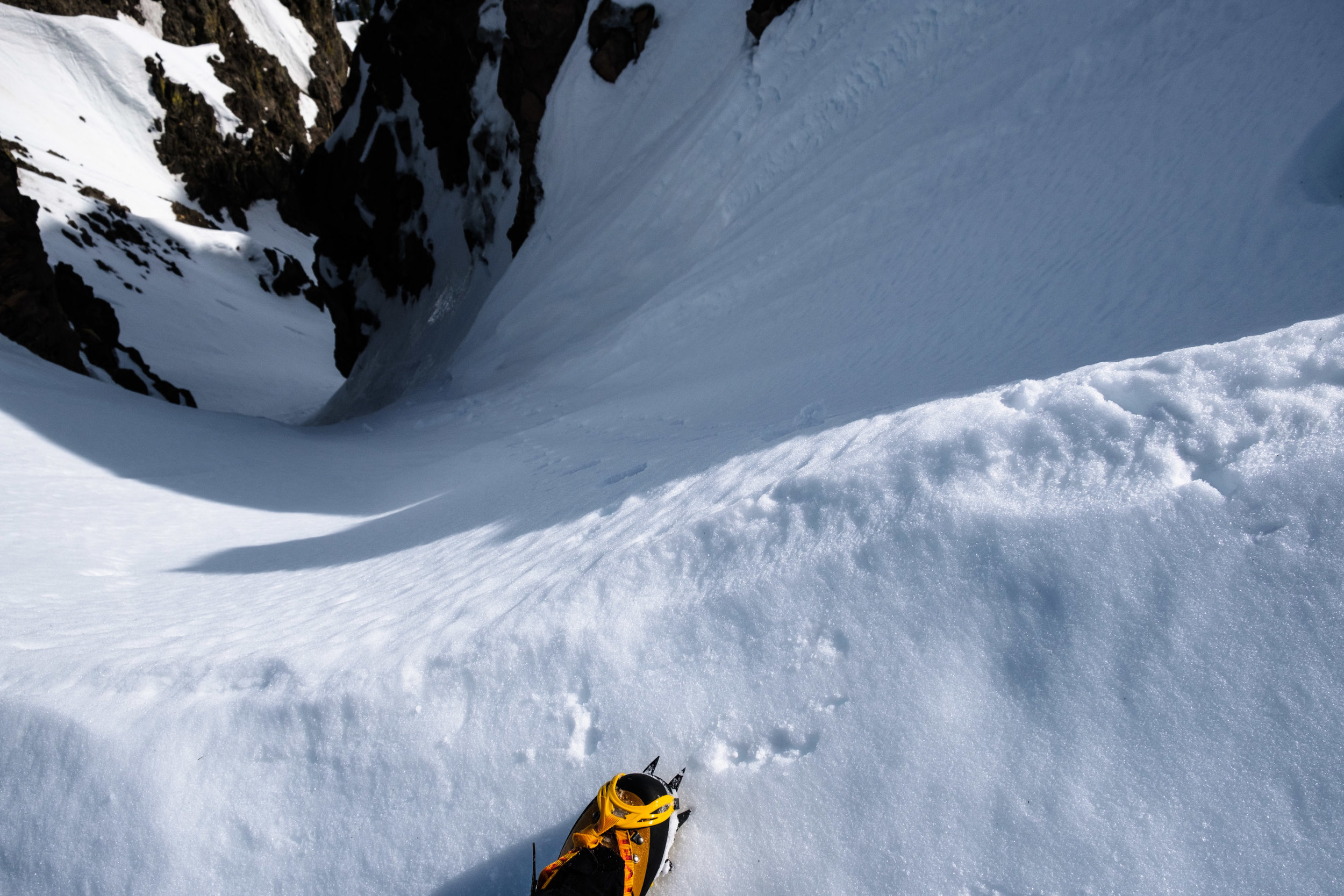
Bibliography
Alpher, R. A., et al. “Origin of the Chemical Elements.” Physical Review, vol. 73, no. 7, 1 Apr. 1948, pp. 803–804., doi:https://doi.org/10.1103/PhysRev.73.803.
Burbidge, E. Margaret, et al. “The Synthesis of Elements in Stars.” Reviews of Modern Physics, vol. 29, no. 4, Oct. 1957, pp. 548–647., journals.aps.org/rmp/pdf/10.1103/RevModPhys.29.547.
Clarke, N M. “Life, Bent Chains, and the Anthropic Principle.” 18 Nov. 1999, www.np.ph.bham.ac.uk/history/nucleosynthesis.
Cook, C. W., et al. “B12,C12, And the Red Giants.” Physical Review, vol. 107, no. 2, 1957, pp. 508–515., doi:10.1103/physrev.107.508.
Dodd, Matthew S., et al. “Evidence for Early Life in Earth's Oldest Hydrothermal Vent Precipitates.” Nature, vol. 543, no. 7643, 2017, pp. 60–64., doi:10.1038/nature21377.
Goldblatt, C., et al. “The Eons of Chaos and Hades.” Solid Earth, vol. 1, no. 1, 2010, pp. 1–3., doi:10.5194/se-1-1-2010.
Kane, Phillip S. Through Vulcan's Eye: The Geology and Geomorphology of Lassen Volcanic National Park. Loomis Museum Assoc. in Cooperation with the National Park Service, 1980.
Matthews, Robert. “Timeline of the Universe.” The Guardian, Guardian News and Media, 26 Apr. 2008, www.theguardian.com/science/2008/apr/26/universe.physics.
Monroe, Robert. “How the West Was Stretched.” Scripps Institution of Oceanography, 1 Sept. 2010, http://scripps.ucsd.edu/news/how-west-was-stretched.
Siegel, Ethan. “The Only Three Heavy Elements In The Universe That Aren't Made In Stars.” Forbes, Forbes Magazine, 1 July 2015, www.forbes.com/sites/ethansiegel/2015/07/01/the-only-three-heavy-elements-in-the-universe-that-arent-made-in-stars/#55bd6c4e39e6.
Tyson, Neil deGrasse. Astrophysics for People in a Hurry. W.W. Norton & Company, Inc., 2017.
Tyson, Neil deGrasse. “Forged in the Stars.” The Cosmic Perspective, 1 Aug. 1996, www.haydenplanetarium.org/tyson/read/1996/08/01/forged-in-the-stars.
Zimmermann, Kim Ann. “Pleistocene Epoch: Facts About the Last Ice Age.” LiveScience, Purch, 29 Aug. 2017, www.livescience.com/40311-pleistocene-epoch.html.